Kultur in Gefahr - ITI
Kultur in Gefahr - ITI
Kultur in Gefahr - ITI
Create successful ePaper yourself
Turn your PDF publications into a flip-book with our unique Google optimized e-Paper software.
50 Artistic Expression <strong>in</strong> a Corporate World Artistic Expression <strong>in</strong> a Corporate World 51<br />
chapter 4<br />
REGULATIONS IN FAVOUR OF ARTISTIC DIVERSITY<br />
Robust regulatory systems<br />
In the fields of film, music, theatre, dance, visual arts, design, and<br />
publish<strong>in</strong>g (whether presented <strong>in</strong> the real world or by audiovisual or digital<br />
means) there are dom<strong>in</strong>ant market positions that harm broad access to<br />
cultural communication. From a human rights perspective this is a loss.<br />
Some of these market-dom<strong>in</strong>at<strong>in</strong>g cultural conglomerates are foreign to a<br />
country; others are domestic, as <strong>in</strong> the USA or Brazil. Left to the market,<br />
mergers and take-overs will cont<strong>in</strong>ue. However, democracy demands the<br />
reverse. In all fields of the arts and media, there should be producers,<br />
distributors and promoters, who have strong local aff<strong>in</strong>ities, and yet<br />
orig<strong>in</strong>ate from many different parts of the world. National states should<br />
regulate the cultural market <strong>in</strong> favour of diversity <strong>in</strong> order to reach this<br />
ideal. A Convention on Cultural Diversity, that would take culture out of<br />
the neoliberal WTO context, would hopefully give states the full right to<br />
implement the k<strong>in</strong>ds of regulations they judge necessary for the protection<br />
and promotion of cultural diversity.<br />
Already now, even before such a Convention on Cultural Diversity<br />
would exist, systematic th<strong>in</strong>k<strong>in</strong>g should take place about the k<strong>in</strong>ds of<br />
regulations that would be appropriate, for specific categories of the arts, <strong>in</strong><br />
specific parts of the world. There are several categories of regulations to<br />
consider: ownership regulations (<strong>in</strong>clud<strong>in</strong>g competition law), content<br />
regulations, and regulations of the public accountability of cultural<br />
enterprises, subsidy systems, tax policies and different k<strong>in</strong>ds of<br />
preferential treatments.<br />
Gillian Doyle is right when she writes that media ownership is ‘a<br />
difficult political m<strong>in</strong>efield’, and therefore ‘the design of a regulatory<br />
scheme to deal with concentrations ought to be robust, equitable and<br />
squarely aimed at legitimate public policy objectives.’ (2002: 177) Thus our<br />
mission is clear, but also extremely complicated. Regulations should be<br />
flexible enough to respond adequately to the chang<strong>in</strong>g cultural landscape,<br />
<strong>in</strong>telligently composed so that they cannot be bypassed easily or miss the<br />
target, practically allow<strong>in</strong>g monitor<strong>in</strong>g, impossible to skirt around<br />
juridically, and understandable so that they can be accepted easily.


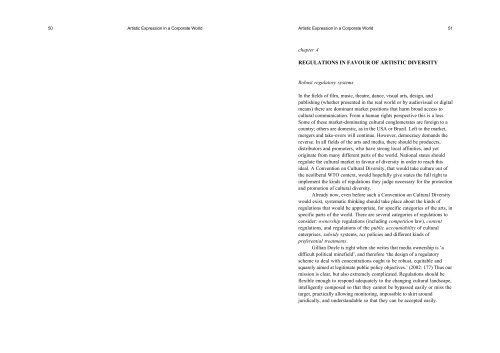
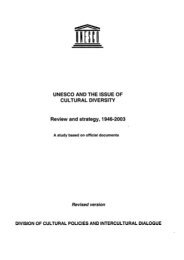

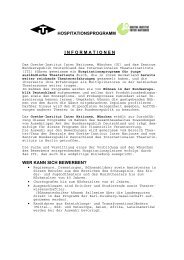

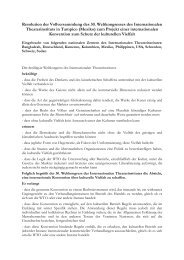
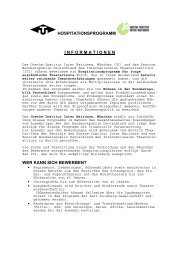
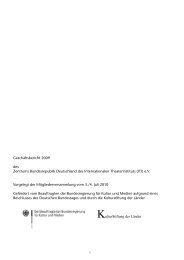
![Geschäftsbericht 2010 [pdf 2 MB] - ITI](https://img.yumpu.com/4380475/1/184x260/geschaftsbericht-2010-pdf-2-mb-iti.jpg?quality=85)